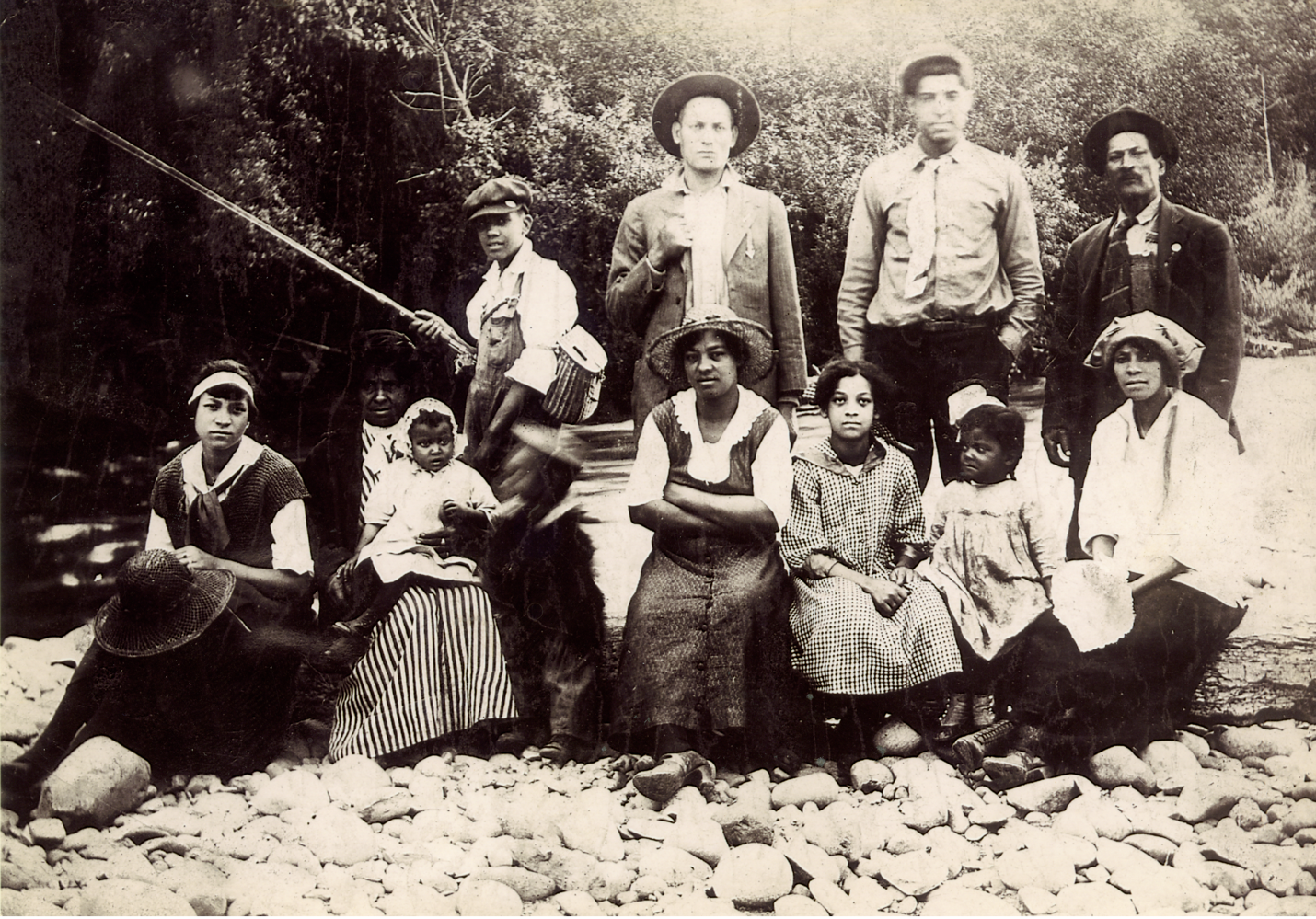The Donaldsons Stand Among Roslyn's Black Pioneers Part 2
Jessee and Anna (Smalley) Donaldson
This is the second part of a series on Roslyn’s Black Pioneers, made possible due to the diligent research of Lillian “Babe” (Donaldson) Warren and her husband Robert E. Williams through “The Donaldson Odyssey: Footsteps to Freedom” and the continued efforts of Donaldson family to bring their family history to light.
Patriarch Jessee Donaldson was born in 1846 in Huntsville, Alabama, the son to Sarah, a Black woman who was enslaved and the father believed to be the plantation’s white owner, Levi Donaldson. Levi also happened to be a Baptist minister and was married to a white woman named Charlotte when he set eyes on Sarah. It was widely known that Jessee was Levi’s son, with Jessee noting in a disability affidavit 50 years later that his father was his “only master.” From his earliest years, Jessee was set apart from the 50 or so other enslaved people living on the plantation.
He was spared the punishing demands of the enslaved Black people in the fields, tasked with picking cotton until their hands ached and bled. But he was still in a role of servitude to his father and half siblings in the family house, and that’s something he couldn’t and wouldn’t abide.
Jessee was presumably cited as the sole male “mulatto” on the Donaldson planation according to the 1860 United States Census Slave Schedule. Though Levi couldn’t directly admit Jessee was his son, he apparently allowed for this terminology as head of household.
When the Northern army was recruiting enslaved people to join their efforts, Jessee seized the opportunity. While his mother, Sarah, feared for his safety, she understood his need to be a free man and aided him in his departure from the Donaldson plantation. Jessee ventured out from under a life of slavery by enlisting in the Tennessee 15th U.S. Colored Infantry Regiment for the Union Army when he was only sixteen years old.
Routt House, "Hazel Green," Photograph Collection, HMCPL Special Collections. Image taken ca. 1960s prior to the fire that burned down the house. (Huntsville Public Library Special Collections)
The Donaldsons’ former plantation house was owned by Elizabeth Dale. Rumored to have killed six of her seven husbands, she was dubbed the “Black Widow of Hazel Green.” Coming under such scrutiny, she needed to sell the home and get out of dodge quickly. Levi and Charlotte Donaldson purchased the home to raise their family, which included the people who were enslaved there, and Dale was never heard from again.
Although fire destroyed the house in the 1960s, the original Donaldson cemetery lives on, and is the final resting place for Levi, Charlotte, and multiple household members.
“One of the things that really chilled me is that when she [Dale] built the home, there was a servant bell in every room,” Ryan said during his presentation on the Donaldson family at the Roslyn, Ronald, Cle Elum Heritage Club in the fall of 2021.
Levi is portrayed in some family stories and other accounts as perhaps more lenient than other “masters” by permitting marriage ceremonies known as “jumping the broom.” However, just as was done by all the “masters” Levi rationalized white supremacy, claiming ownership over human beings. At least 50 of them. The Hazel Green plantation was increasingly a place Jessee was more than eager to flee, risking it all. Seizing his chance, he enlisted in the Civil War in Shelbyville, Tennessee in 1862 before his regiment had formed.
Jessee sent word of his whereabouts to his friends and loved ones, and eventually his half-brother Washington and friend, General Townsend, joined him in the Tennessee 15th U.S. Colored Infantry in the fight for their freedom.
“The [entire] U.S. Black infantry was made up of over 180,000 Black soldiers,” said Butch Smith. “Abraham Lincoln indicated we would not have won the war were it not for Black soldiers.”
Butch went on to say that Jessee had three years of combat experience in Tennessee. His injuries are verified since he was required to repeatedly describe them to earn his long sought-after pension. “He had a musket blow up in his face, and he was also shot in the shoulder,” Smith said. According to Jessee’s military records and pension applications, he was also hung by his thumbs at one point as a Captain’s punishment, a critical factor that Jessee testified led to his musket misfiring.
It’s staggering to realize that after the Union army won the War, Jessee, along with his brothers and the entire regiment, lacked a home to call their own. There was little roadmap in a wildly uncertain time aside from advisement of the Bureau of Refugees, Freedmen, and Abandoned Lands, the government entity established to assist the formerly enslaved. Recently the Freedmen’s Bureau Records were made freely available online by Ancestry.com, and the Donaldson family located some of Jessee’s military records, although the full scope of the Freedman’s Bureau involvement is still unknown.
As a sidenote, after the Union army won the Civil War, Levi Donaldson’s plantation fell upon hard times. Levi was no longer able to manage an enslaved labor force and reap the profits, with his estate falling into disrepair. His fortune reversed, Levi was said to have died a near penniless man.
In the Odyssey, Babe writes, “although slavery days were over, the Black man was still treated with a great amount of disdain and still must account for his whereabouts and show proof of freedom.”
As you might imagine, once the War ended, Jessee didn’t know where to live out his legally newfound freedom.
“Of all places to go after the war, he ended up in Pulaski, Tennessee,” Butch said. “It’s the same town where local ’hero’ Nathan Bedford Forrest lived. Before the War, Forrest was a white slaver. He was a millionaire who imported and sold enslaved people. During the War, he was an officer in the Confederate army,” Butch continued. “He became infamous, massacring a regiment of Black soldiers at Fort Pillow, Tennessee.”
“When the Black regiment attempted to surrender, Forrest had the captives shot and mutilated,” Butch said. “Tennessee as a state is conflicted. On one hand they see this guy as a state hero because of his military strategies, but he became a founder of the Ku Klux Klan. Jessee ended up living in the same town, and I’m trying to imagine what that must have been like.”
While they can never fully understand Jessee’s complicated experience as a newly liberated Black man in the post-War south, Jessee’s family ponders the frustration he must have experienced, repeatedly reapplying for lengthy applications and affidavits, while being examined by doctors dubious of his true condition.
It was later discovered that Jessee was jailed in Tennessee from 1871-1873 for allegedly “stealing hogs.” Though Babe didn’t include this account in The Red Book—perhaps to appease relatives who didn’t want the past publicized, to protect Jessee’s legacy, or because the documentation was not available to her —the Donaldsons recently learned more details of his difficult experiences in the Jim Crow south.
Ryan recognizes how uncanny it is that sections of Jessee’s story have seemingly fallen in his lap. He may have set out to visit his ancestor’s past dwelling places, but he didn’t expect the Donaldson plantation site to be only half an hour driving distance from his wife’s childhood home.
Likewise, in searching for Jessee’s past records, Ryan learned of the Library of Congress’ Chronicling America project and found Jessee’s name mentioned in a multi-year batch of Pulaski Citizen newspapers. More research showed the county prison where Jessee was held was burned to the ground, so Ryan was amazed to find the old prison ledger preserved during a visit to the Giles County Courthouse.
Photograph of page from Giles County court ledger with the State of Tennessee vs. Jesse Donaldson in 1871. (Ryan Anthony Donaldson)
“We were able to hold 150-year-old documents, and it was almost poetic,” Ryan said. “You can see the smoke seemingly smoldering on it and the water stains. The fact that it survived and that it’s there for us to see is remarkable.”
Invited to inspect the local jail’s mobile holding pen, a historic relic similar to the one Jessee was made to rest while performing the manual labor of his sentence, Ryan recoiled. Realizing that farm animals are treated better, he was unprepared to further explore the inhumanity of his ancestor’s living conditions. “His story is one of justice deferred,” Ryan said, alluding to the fact it took three entire years to schedule Jessee’s trial, with his sentence ultimately a fraction of the time he was imprisoned. “Going to the courthouse in Tennessee, I was struck by the coarse indignity that denied his freedom yet again.”
In The Odyssey, there’s record of Jessee’s first marriage to a woman named Lizzie, who passed away soon after they married. Jessee remarried Anna Smalley in 1875 in Georgia. Family tradition describes Anna as having African and Native American ancestry. The Donaldsons have one photograph they believe to be her, handed down to them. They are interested in elevating what is known about their matriarch.
Donaldson family, ca. 1902, in Roslyn, Washington. Top row (from left): William “Peck”, General “J.J.”, George “Sharkey”, unidentified man. Bottom row (from left): Mary, woman believed to be Anna (holding baby Gladys), Eugene, Hattie, Lizzie, Frankie, and woman believed to be Louisa Nicholas-Clark (General’s wife and mother of the 3 children). (Al “Butch” Smith)
Digitized period newspapers such as the Seattle Republican reveal that Anna was a leader in the local Mt. Zion Baptist church, traveled to Cincinnati as a delegate for a national Baptist convention, and volunteered with the Home Foreign Mission Circle. But beyond that, Anna remains an elusive yet equally important presence, as Jessee’s life partner and the mother to their 10 children, seven of whom survived to adulthood. Their names are as follows: Hattie (born 1876), General (“J.J.”) (born 1878), Thad (born 1881), Mary (born 1885), Elizabeth (“Lizzie”) (born 1888), George (“Sharkey”) (born 1890), and William (“Peck”) (born 1893). Today, there are six branches residing throughout Washington state, California, Texas, Ohio, and beyond.
“I feel called and compelled to tell Jessee’s story,” said Ryan. “It interacts so much with U.S. history and is laced through so many eras. I’m living and embracing this laid out path, so many [of my family’s anecdotes] have found me.”
Over his lifetime, Jessee toiled in numerous trades to make a living. He was a Union soldier. A farmer. A coal miner. It was the late 1890’s, in fact, when coal called. There was such a high demand to extract coal from the earth that Jessee, like many hardworking men, heeded its call. As labor unions formed and white miners striked for better wages and other benefits, recruitment intensified for Chinese American workers and later African American workers.
Jessee and Anna’s embrace of the opportunity to move their family west proved to be a seismic change for their future. Jessee’s son General would also take part in the same coal mining venture as his father and was the first family member to see the Pacific Northwest with his own eyes.



